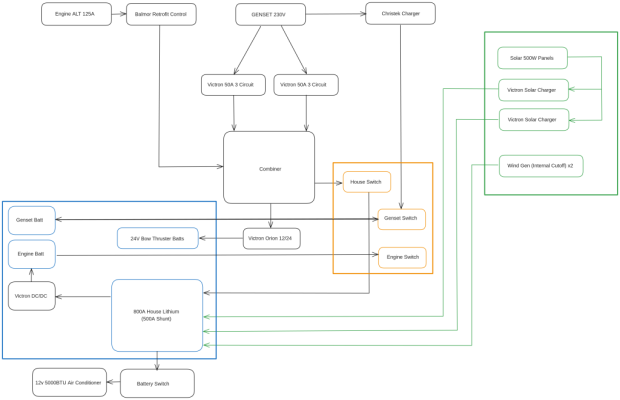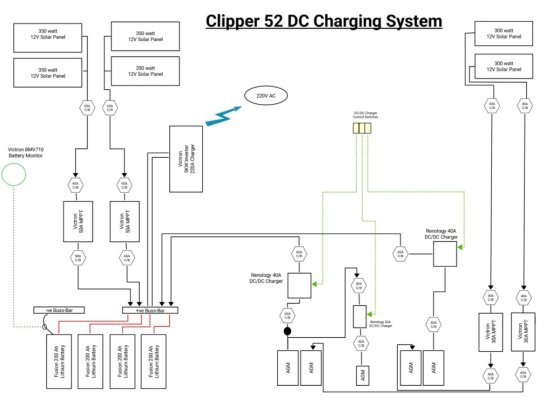seadog52
Member
looking to change my house bank to 800amp lithium, but keep my starters as agm. I have attached a proposed flow diagram , my main concern is the alternator ability, i assume the dc/dc to the engine start is correct? should the wind gens be on a dc/dc? The reason for the large house is for a future 5000btu 12 volt ac unit. Thanks for any input


